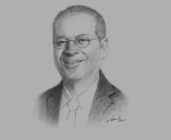Ramon S Ang, Vice-Chairman, President and COO, San Miguel Corporation: Interview

Interview: Ramon S Ang
What has been the private sector’s reaction to the pace at which the public-private partnership (PPP) programme has been implemented?
RAMON S ANG: The implementation of the PPP programme has been slower than most of us expected. I think the government was just being extra-cautious to make sure that there will be no issues with the projects once they are indeed green-lighted. For our part, we’ve also worked hard to fast-track our own projects, which, though not falling under the PPP umbrella, are still very much part of our country’s development agenda. These include the Tarlac-Pangasinan-La Union Expressway and Skyway Stages 3 and 4. There is already a lot of interest, from local and foreign firms, to undertake PPP projects in the Philippines. Perhaps what needs to be done is to build our country’s image as a compelling investment destination that offers a level playing field and consistency in terms of government support and regulation.
What national development goals and economic sectors are likely to benefit the most from publicprivate collaboration?
ANG: Infrastructure is a key sector that we need to develop if we are to accelerate the Philippines’ growth. We are behind many of our Asian neighbours in terms of infrastructure, and this is why our government is focused on this area and also why companies like ours are bullish about pursuing such projects.
Power is also a perennial problem in the Philippines, particularly in the countryside where many still do not have power supply security. In order to meet our country’s growth targets, we need to meet first its power requirements and have enough capacity for the future growth. Again, this is why we have invested significantly in this sector. Currently, we are constructing two new power plants that we hope will go a long way towards providing adequate and consistent power supply in Luzon as well as in the Mindanao and Visayas regions. Such development of infrastructure and electricity will benefit all economic sectors and spur further growth.
To what extent might the domestic availability of a skilled labour force and technical know-how affect the success of the PPP scheme?
ANG: The Philippines has more than enough talented engineers, technical workers and skilled workers capable of helping bring about major infrastructure projects. In fact, our workers constitute some of our biggest exports. But this becomes a problem as many of our best talents are probably working abroad. Hopefully, with the PPP programme, and with the acceleration of infrastructure and development projects, there will be more job opportunities at home for talented Filipino workers. When these projects spur more economic growth, these opportunities will only increase.
What PPP projects present the greatest value proposition to improve infrastructure systems and attract long-term investment in anticipation of the ASEAN Economic Community in 2015?
ANG: Definitely road, port and airport projects, in that order. These will facilitate an increase in the flow of people, goods and services in and out of the country and will directly benefit economic growth. To ensure inclusive growth, mass transportation systems such as railways and bus rapid transits must also be developed.
How can coordination among government departments and central and regional governments be improved to boost capacity among stakeholders?
ANG: The National Economic Development Authority’s Long-Term Strategic Development Framework Plan contains the physical development directions for the entire country until 2020. Every administration also has a Medium Philippine Development Plan that provides development directions for six years. These should be cascaded to the national implementing agencies and to various local governments which are the direct beneficiaries of these plans. Key to the recognition of various government sectors of these strategic plans is implementation of these specific projects into law.
You have reached the limit of premium articles you can view for free.
Choose from the options below to purchase print or digital editions of our Reports. You can also purchase a website subscription giving you unlimited access to all of our Reports online for 12 months.
If you have already purchased this Report or have a website subscription, please login to continue.

